
Nature’s Best Photography 2025: 20 Amazing Finalists That Remind Us Why Nature Is The Ultimate Artist
The Nature’s Best Photography (NBP) Awards 2025 once again remind us just how breathtaking our planet truly is. Each year, photographers from around the world submit their most striking images that capture the raw, untouched beauty of the natural world, and this year’s finalists did not disappoint. From frozen tundras and golden deserts to rainforests bursting with life, these stunning shots celebrate nature in all its wonder and fragility.
Below are some of the most captivating entries from this year’s competition, a tribute to the photographers who waited for the perfect light, the perfect moment, and the perfect connection with the wild.
More info: new.express.adobe.com | Instagram | Facebook
#1 Highly Honored, Wildlife: Bighorn Sheep By David Swindler Of Kanab, Utah, USA

Image source: naturesbestphotomagazine
#2 Highly Honored, Outdoor Adventure: Night With The Ancients By Paul Zizka Of Banff, Alberta, Canada
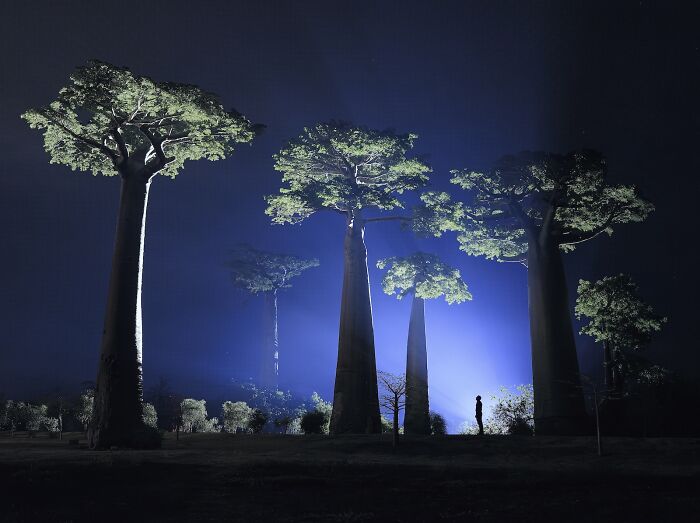
Image source: naturesbestphotomagazine
“Nighttime with the Ancients: I only spent one night with these giants, but I would have gladly stayed much, much longer. The baobabs of Baobab Alley in Madagascar are a breathtaking natural wonder. Towering up to 30 meters high, these ancient trees—some over 800 years old—stand like silent giants along a dusty road, their massive, bottle-shaped trunks and sparse canopies casting surreal silhouettes against the night sky. I added myself to the frame to emphasize the sense of scale. Revered by locals and admired by travelers, the baobabs are not just trees—they’re sacred monuments to time, resilience, and nature’s grandeur. Baobab Alley is a place where the majesty of the natural world is laid bare in stunning simplicity.”
#3 Highly Honored, Landscapes: Cinque Torri By David Swindler Of Kanab, Utah, USA
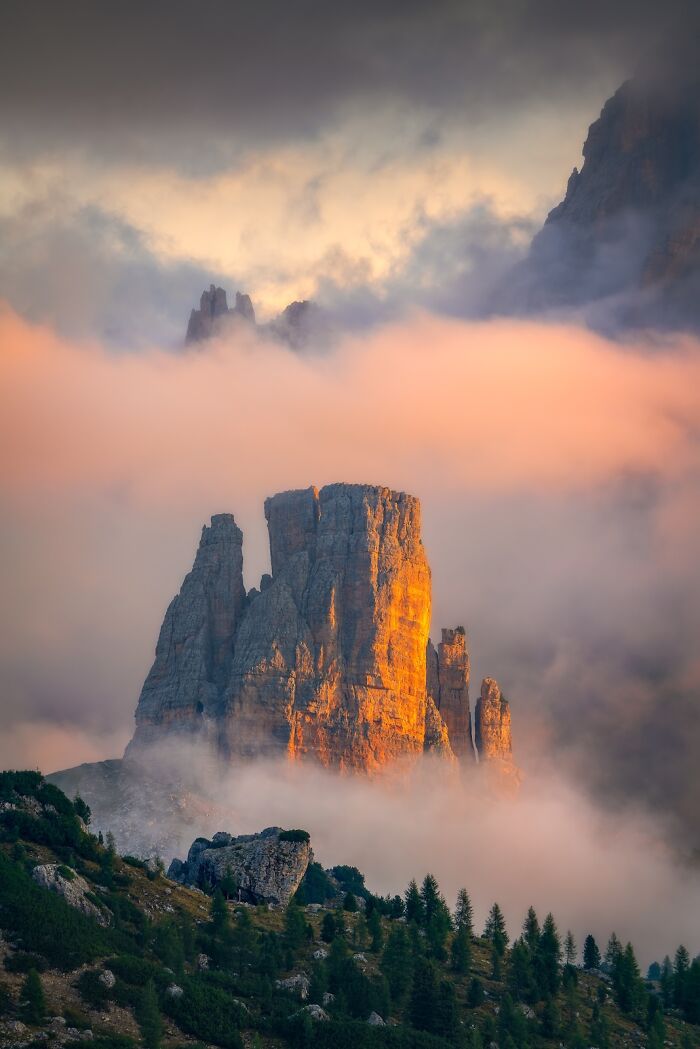
Image source: naturesbestphotomagazine
“It was an atmospheric, foggy morning as the early light began to illuminate the surrounding towers and mountains. I loved how the fog framed Cinque Torri in the distance.”
#4 Highly Honored, Art In Nature: Path Of The Brittle Star By Alan Smith Of Reading, Berkshire, UK
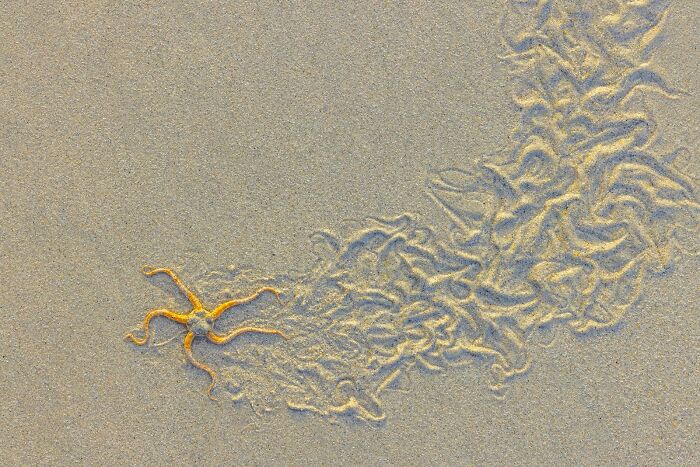
Image source: naturesbestphotomagazine
“The stunning seascapes around Luskentyre Beach draw photographers from all over the world. I found myself there one dank, granite-grey November morning. With limited photo options, I challenged myself to create an image that told the story of the day. Searching for a subject, I noticed a disturbance in the otherwise perfectly smooth sand—a starfish. As I studied its body, I observed the indentations in the sand becoming narrower and lighter as it had attempted to make its way to the ocean. The now-lifeless brittle star’s final journey would remain visible only until the briny blanket of water washed it back to the sea, but the artful design it created allowed me to capture this story in a single photograph.”
#5 Highly Honored, Art In Nature: Shining Antlers By Kohei Nagira Of Izumo, Shimane, Japan

Image source: naturesbestphotomagazine
“In early spring, male Ezo sika deer begin to grow new antlers. Covered in velvet — skin rich with blood vessels and nerves — these antlers develop rapidly and can reach full length by summer. When struck by sunlight, they glow with a delicate, golden light.
This photo was taken in Kushiro, Hokkaido, where deer are commonly seen and often considered pests. It is not a remote wilderness, but an ordinary place where nature and people coexist. Still, even in such settings, beauty can emerge through vision and timing.
I had a clear image in mind before shooting. To create a glowing silhouette, I deliberately underexposed the scene and waited for the deer to be perfectly backlit. The soft hairs on the velvet antlers caught the setting sun, forming a radiant crown of light. I used no flash, maintaining a respectful distance to avoid causing stress. With patience and intention, a familiar subject became something quietly powerful.
This image reminds us that even in ordinary surroundings, nature’s quiet transformations deserve our attention — and our care.”
#6 Highly Honored, Landscapes: Campton Pond Sunrise By Harry Lichtman Of Newmarket, New Hampshire, USA

Image source: naturesbestphotomagazine
“I had passed this pond hundreds of times over the years on my way to nearby mountain hikes or cross-country skiing, but I was never drawn to photograph it—until now. On this autumn morning, my original plan was to hike a nearby mountain for sunrise. The foliage color and patchy fog looked so idyllic that I quickly changed my plans to see what light might develop over the pond at sunrise.
After choosing a composition along the shoreline, I heard geese honking in the distance. They eventually flew by me, but it was still too dark to photograph. As the sky began to color, I started taking exposures at low ISO and slightly longer shutter speeds, as I typically would in still conditions. When I heard Canadian geese again in the distance, I quickly adjusted my settings to faster shutter speeds to capture them sharply if they flew by.
I could see the flock approaching the pond and took several exposures as they passed. Their presence added a dynamic element, making the image far more compelling than the pond alone.”
#7 Winner, Conservation Single Image: Sri Lankan Asian Elephant In Waste Pile By Lakshitha Karunarathna Of Colombo, Sri Lanka

Image source: naturesbestphotomagazine
“A lone Sri Lankan elephant stands atop an endless sprawl of discarded waste—its massive form surrounded not by forest, but by a kaleidoscope of plastic, polythene, and household debris. This image is part of a long-term photographic project documenting the devastating realities of the human-elephant conflict in my country.
Sri Lanka is home to more than 10% of the global Asian elephant population, yet their survival is increasingly jeopardized. Encroaching waste sites near vital dry-zone forests are frequently visited by elephant herds, and many individuals ingest microplastics and other non-biodegradable materials, often leading to fatal internal injuries.
Only a drone can reveal the true scale of this crisis. To achieve this visual ‘shock,’ I needed perfect alignment: a break in the rain and the position of a lone elephant on a vivid patch of waste—while operating the drone safely in monsoonal winds.”
#8 Youth Photographer Of The Year: Great Hornbill In Flight By Lisiqi Ye, At Age 17, Of Beijing, China
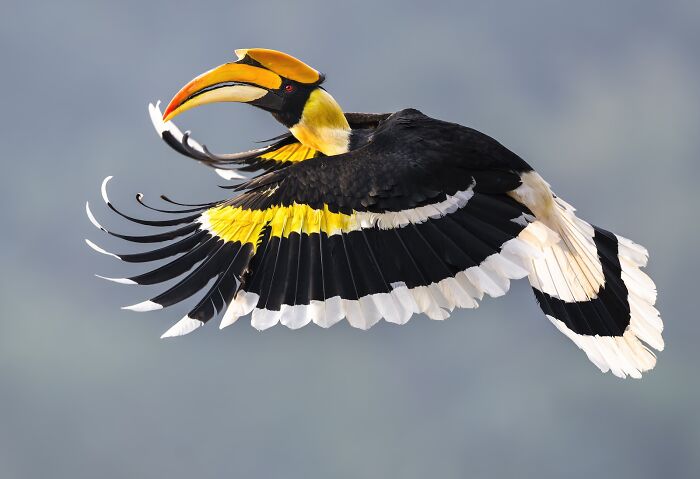
Image source: naturesbestphotomagazine
“During breeding season, Yingjiang’s Hornbill Valley runs on ritual. I spent days in a hide facing a fig-rich cavity claimed by a pair. Each time the male returned, I tallied his actions: mud at the rim, a test landing, a flicked fig into the dark—rehearsals to persuade her to enter and stay. On the day I captured this image, he came home heavy with fruit. He faced the wind, bled off speed; wingbeats drummed, and his casque caught the sun. He skimmed so close the camera I could feel his breath. I pressed the shutter as he hung, weightless, at the hollow’s mouth. By afternoon, the female had sealed herself in, and it was time for the male to begin his long shift of deliveries.”
#9 Highly Honored, Ocean Views: Leafy Sea Dragon By Nicolas Remy Of Sydney, Nsw, Australia
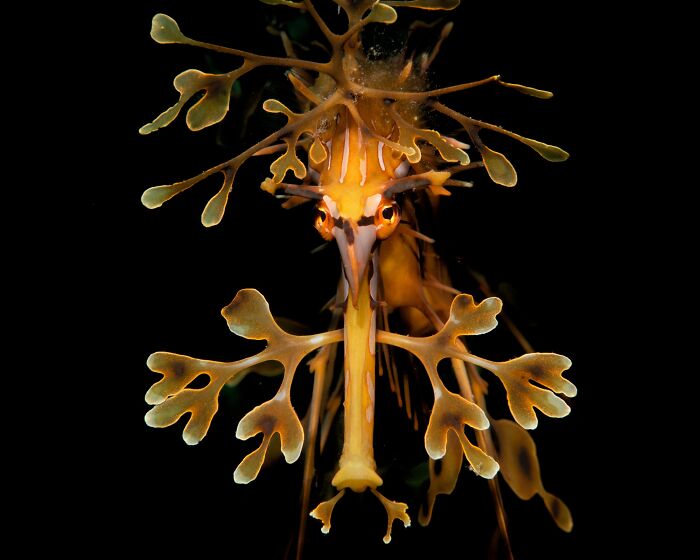
Image source: naturesbestphotomagazine
“Leafy sea dragons are a favorite subject for underwater photographers, yet they are fragile creatures—poor swimmers that cannot easily flee. To minimize disturbance, I dived solo (with appropriate certification) and used a rebreather, allowing me to move quietly and without bubbles.
Over four days, I spent more than 22 hours in the water, taking all the time needed to ensure relaxed encounters. In one patch of reef, I was lucky to find three adult sea dragons living close together. I moved slowly between them, simply observing, and swam away whenever other divers approached to give the animals space. I only approached when a dragon was both calm and in a position that matched the image I had envisioned.
My goal was to create a symmetrical portrait highlighting the shy creature’s delicate appendages against a black background. To achieve this, I used a snoot to narrow the beam of my strobe and adjusted my exposure settings to minimize ambient daylight. Before moving in, I pre-set and tested my lighting on a piece of algae. When one dragon finally held still in perfect alignment, I inched forward and captured just a couple of frames.”
#10 Highly Honored, Art In Nature: Mozambique Ghost Goby By Simon Biddie Of Edinburgh, Scotland, UK
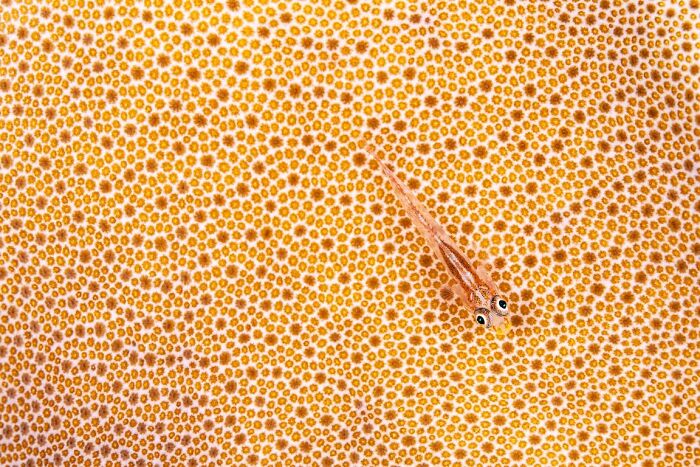
Image source: naturesbestphotomagazine
“Small reef fish, unassuming and often unseen, are a critical part of reef food chains. They evade predators by being experts at hiding. These small fish are also known as ‘cryptobenthic’ fish — ‘crypto’ because they hide in crevices or use camouflage. This photograph of a Ghost goby demonstrates just how adept these tiny fish can be at concealment.
Growing to about 2 cm long, they are perfectly adapted to blend in among coral. Their transparent bodies, fins with suction for a firm grip, and low-set gills minimize movement, helping them avoid predators. Meanwhile, their large, angled eyes constantly scan for plankton.
This image was taken on a morning dive in Marsa Alam, southern Egypt, along a Red Sea reef wall. Using a macro underwater setup while scuba diving, I captured the Ghost goby against hard coral, with the coral polyps forming textured spots in the background. The scene was lit with strobes, and a small aperture ensured both the subject and background remained in focus. This sharp focus highlights how the Ghost goby blends seamlessly into its dichromatic coral environment.”
#11 Highly Honored, Art In Nature: Desert Layers By Matteo Strassera Of Rome, Italy

Image source: naturesbestphotomagazine
“The beauty of the desert is subtle and often difficult to capture. To the untrained eye, it may appear as an immense expanse of sand — flat, monotonous, and always the same. However, if you look more closely, you will notice that no two dunes are identical; each differs in shape, size, and texture. Spending a week in one of the largest Arab deserts, Rub’ al-Khali, taught me to pay attention to these small details, to recognize abstract figures and shapes in a landscape that seems sculpted by human hands rather than chaotically shaped by wind and nature.”
#12 Highly Honored, Landscapes: Mirror Image Of Baobab Avenue By Felipe Foncueva Of Madrid, Spain
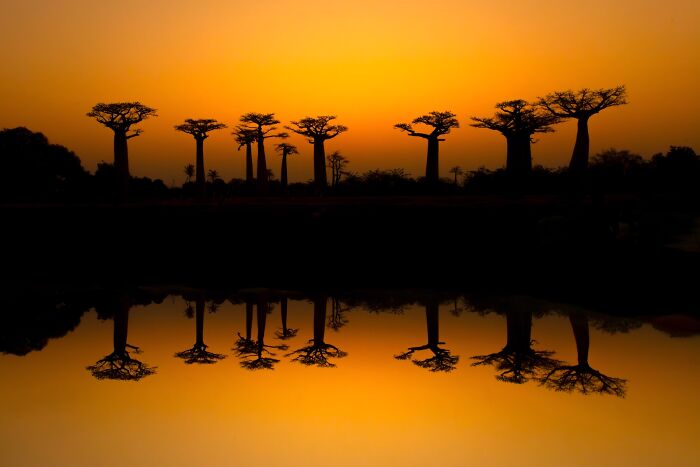
Image source: naturesbestphotomagazine
“The baobab is not only a widespread tree in Madagascar but also holds magical and spiritual significance for the locals. Sunrises and sunsets in front of these giants are breathtaking. In this shot, I wanted to use the mirror effect with the backlit silhouettes, creating a sense of symmetry in the image.”
#13 Highly Honored, Birds: Bohemian Waxwings By Amy Gerber Of Cody, Wyoming, USA

Image source: naturesbestphotomagazine
“If Mother Nature had a Christmas tree, it would be this one — a tree past its prime, holding on for its last few breaths. Its little cones, filled with tiny seeds, will scatter across the landscape when the time comes. But for now, it serves as a resting post for weary birds that have flown hundreds, even thousands, of miles from the far north.
This species, the Bohemian Waxwing, migrates to Wyoming each winter from Canada. They spend the season gorging on juniper berries, which grow abundantly here, before heading back north in spring. These waxwings don’t seem to mind that the tree has lost its green, youthful glow. In fact, the rusty needles perfectly match the rusty crowns of each bird — a harmony I found breathtakingly beautiful.
So, if Mother Nature could design the perfect Christmas tree, I think it would look just like this. I love winter photography and often find myself out in the Shoshone National Forest almost every day during the season. There’s something clean, fresh, and profoundly beautiful about cold, snowy environments, and I take full advantage of every opportunity to capture them.”
#14 Highly Honored, Ocean Views: Sally Lightfoot Crab By Kevin Lohman Of Santa Cruz, California, USA
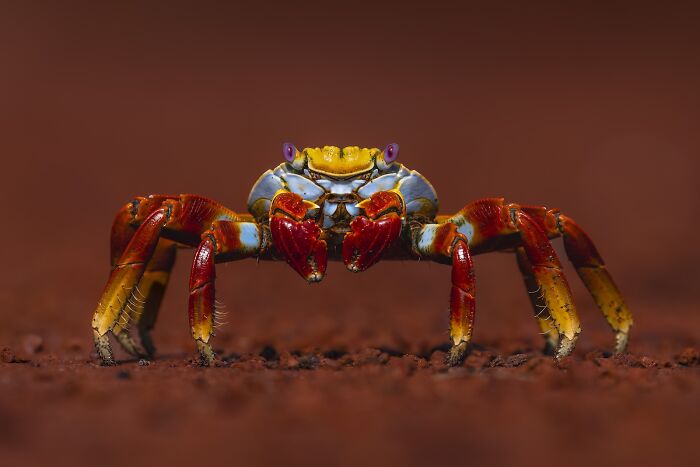
Image source: naturesbestphotomagazine
“A Sally Lightfoot Crab rests on the striking, iron-rich red sand of Rabida Island in the Galápagos. The sand’s vivid hue comes from volcanic material rich in iron oxide, a feature unique to the islands. The crab’s brilliant reds, oranges, yellows, blues, and purples stand out in bold contrast against the deep brick-red shore. Finding it higher on the beach, away from the surf, allowed me to lie flat on the sand and photograph it at eye level—capturing its vivid colors against this extraordinary shoreline.”
#15 Highly Honored, Outdoor Adventure: Cowboy Riding In The Snow By David Swindler Of Kanab, Utah, USA
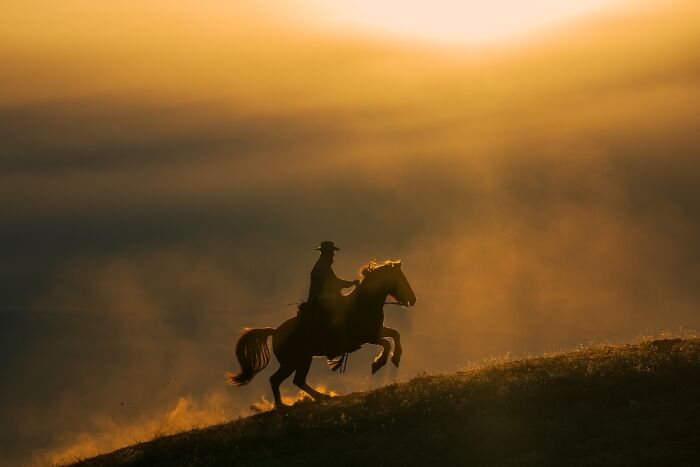
Image source: naturesbestphotomagazine
“It was a cold winter day with fresh snow on the ground when we went out to photograph these talented horsemen and women. We found the perfect hill in front of the setting sun. As they galloped, snow, dust, and moisture from their breath created beautifully atmospheric backlit conditions.”
#16 Winner, Grand Prize: Emperor Penguins By Thomas Vijayan, Ontario, Canada

Image source: naturesbestphotomagazine
“Emperor penguins in Antarctica epitomize extraordinary familial bonds. Within the icy expanse, these majestic creatures orchestrate a delicate symphony of cooperation and nurturing to safeguard their chicks against the unforgiving polar conditions. Both parents actively participate in the intricate dance of parenthood, alternating between egg incubation and foraging expeditions in the icy depths.
Before capturing this moment, I spent hours lying flat on the sea ice, patiently allowing the penguins to acclimate to my presence. Gradually, I began photographing them from various angles, capturing their intimate interactions. This particular image holds a special place in my heart as it portrays the profound familial affection shared among these remarkable birds.
Within their synchronized embrace, the chicks find solace, nestled in the warmth of their devoted parents amid the icy wilderness. This tender display of familial unity speaks volumes about the resilience and fortitude of life in one of the harshest environments on Earth.”
#17 Highly Honored, Animal Antics: Mountain Hare, Monadhliath Mountains By Andy Parkinson, Crich, Derbyshire, England, UK

Image source: naturesbestphotomagazine
“Nature has an uncanny knack for delivering the unexpected. In this moment, the hare stretched out its hind leg directly toward me, as if to salute—or offer a high five (or four!). Either way, this completely natural and relaxed behavior was a clear sign that the hare felt completely comfortable in my presence.”
#18 Highly Honored, Polar Passion: Musk Oxen Confrontation By Daniel Valverde Fernández Of Madrid, Spain

Image source: naturesbestphotomagazine
“This shot shows a close-up of two musk oxen (Ovibos moschatus) as they test their strength in a light confrontation. Capturing this image was truly challenging, as these animals are found on the summits of Dovrefjell, and I had to walk around 15 km through fresh snow to reach them. They are also quite skittish, so you have to approach slowly to get a close-up like this. A bit of luck is also needed to capture such a magnificent moment. This ancient species was nearly driven to extinction due to mass hunting and can now only be seen in the most isolated regions of the Arctic Circle.”
#19 Highly Honored, Wildlife: Sumatran Orangutan On Strangler Fig By Marco Gaiotti Of Genova, Italy

Image source: naturesbestphotomagazine
#20 Highly Honored, Wildlife: Flying Foxes By Baiju Patil Of Maharashtra, India

Image source: naturesbestphotomagazine













Got wisdom to pour?